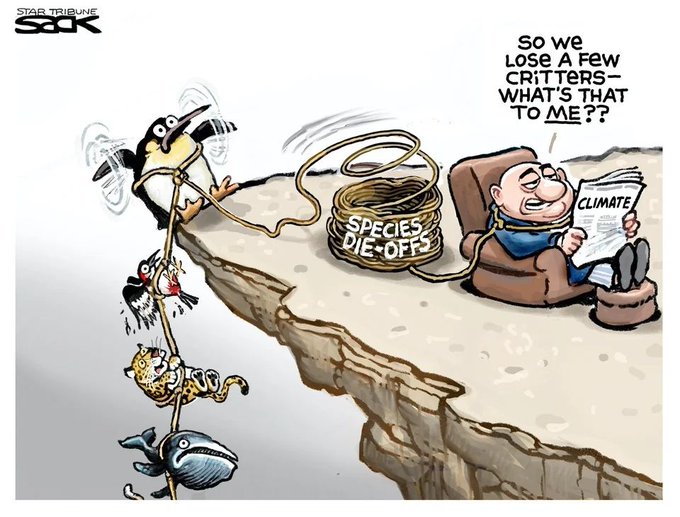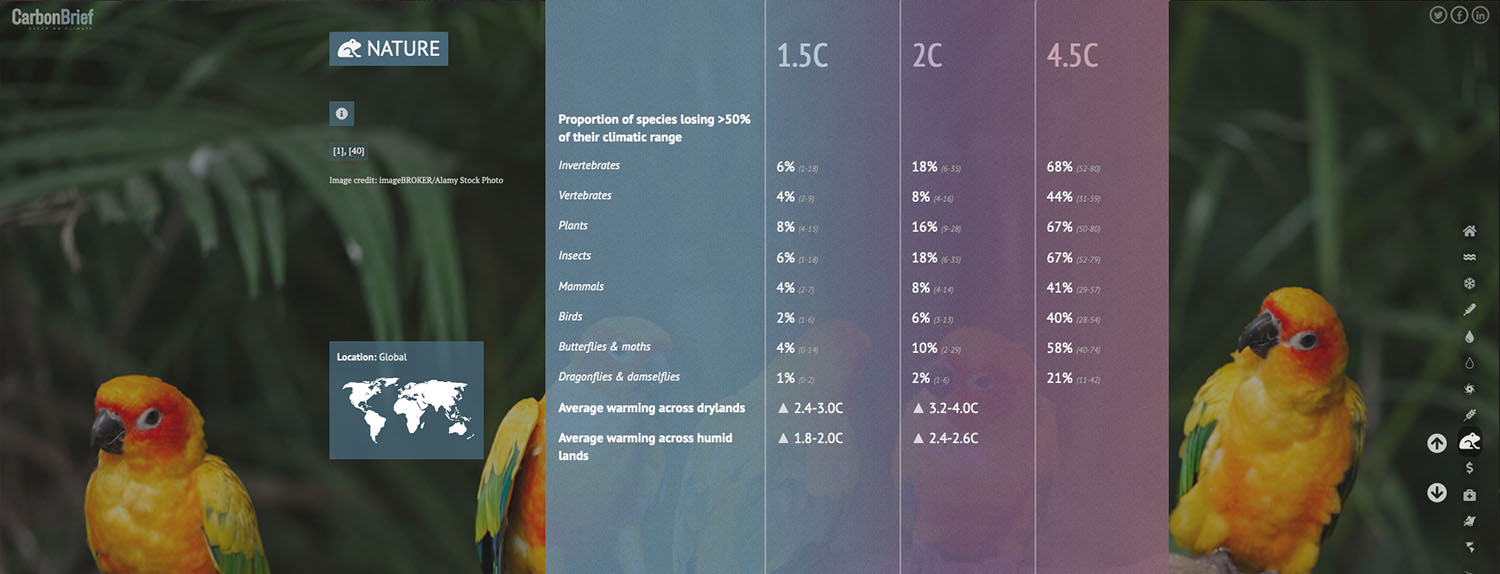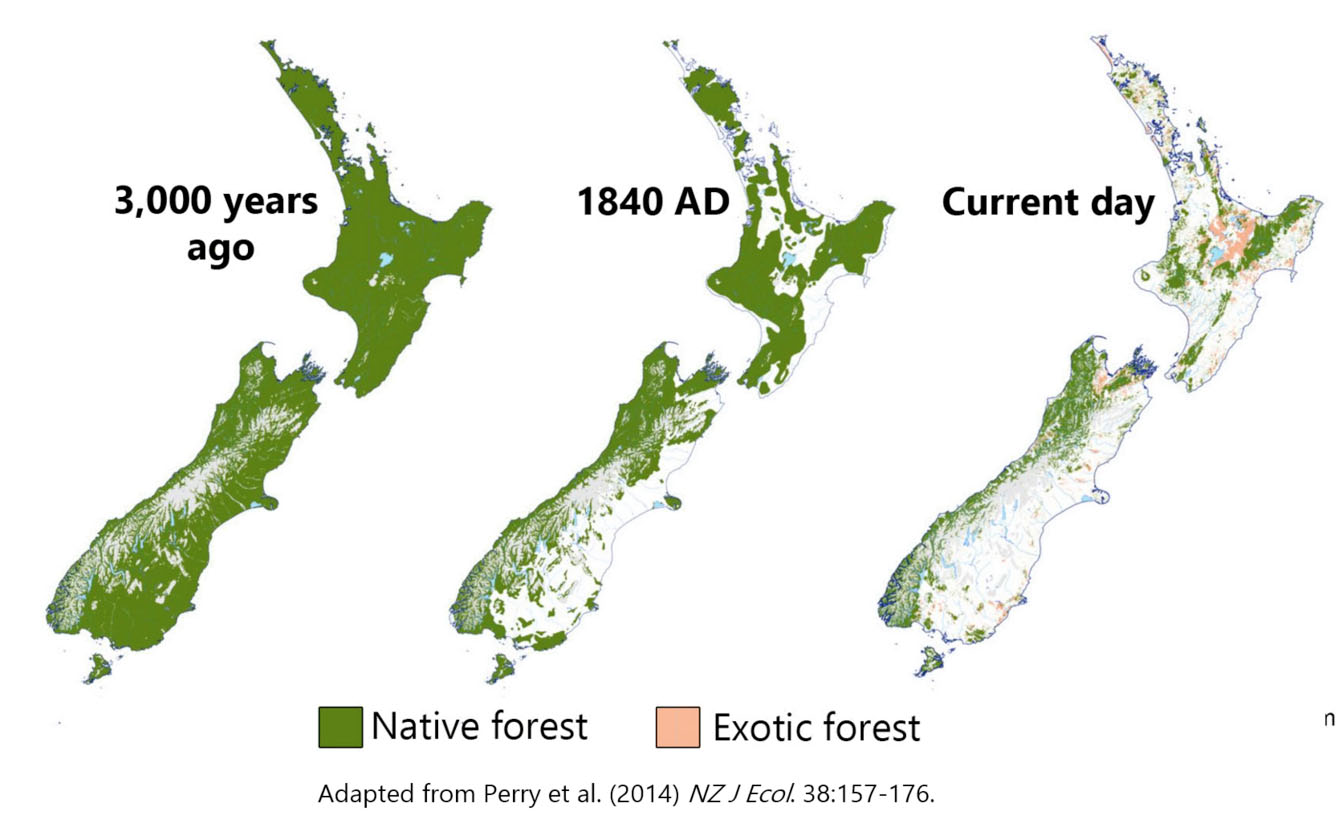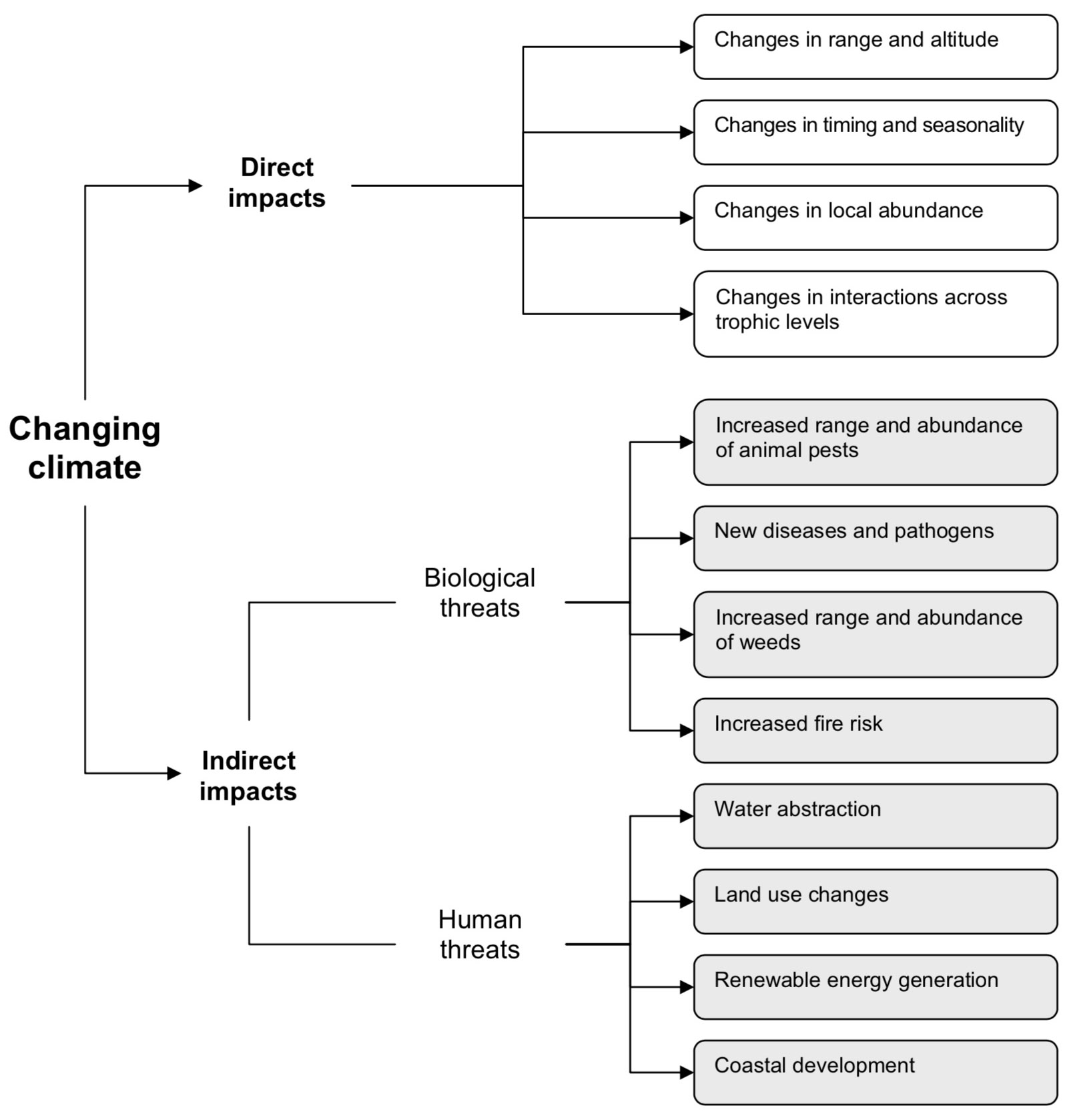The climate change forecast for global biodiversity
Much of New Zealand’s biodiversity has already been lost (Fig. 2) or fragmented to the point where critical life supporting ecosystem services are failing.
The losses are continuing with little or no consequences to landowners who deliberately destroy native habitats.
Climate change is placing even more pressure on natural ecosystems, undermining their ability to help us mitigate the impacts and adapt to changes (Fig. 3).
Soil biodiversity, which is crucial to our existence, is largely ignored except where it affects the amount of food we can grow.
“Humanity stands at a crossroads with regard to the legacy it leaves to future generations. Biodiversity is declining at an unprecedented rate, and the pressures driving this decline are intensifying. None of the Biodiversity Targets will be fully met, in turn undermining efforts to address climate change.” – Global Biodiversity Outlook 5 (2020)
The following is from the 2020 Department of Conservation report (pages 51-52) Biodiversity in Aotearoa: an overview of state, trends and pressures
Climate change | Te panoni āhuarangi
New Zealand’s biodiversity will come under increasing pressure as a result of global climate change (Christie et al. 2020). Pressures such as ecosystem fragmentation and pests will also likely be exacerbated (McGlone et al. 2010). It is difficult to know precisely how New Zealand’s biodiversity will respond to climate change in the long term. This is partly because the country’s climate is already highly variable, and partly because for land ecosystems many species and habitat types are now restricted in range as a result of vegetation clearance and the introduction of invasive pests (McGlone et al. 2010).
Some species and ecosystems will be more vulnerable to climate change than others (McGlone et al. 2010). For instance, the sex of a tuatara embryo is determined by the ambient temperature, so that warming will produce more males than females (Mitchell et al. 2010). Native peketua/frogs need moist conditions to survive (Newman et al. 2013), as do land snails (Walker 2003), and kiwi need soft ground to probe for worms (Cunningham & Castro 2011), so any changes resulting in a drier climate are likely to have impacts on those species. Similarly, kōura/freshwater crayfish have been shown to be highly sensitive to climate change, primarily because of their habitat specialisation (Hossain et al. 2018). In the freshwater environment, species such as alpine galaxias, which has a restricted distribution and is reliant on colder water temperatures, will be vulnerable to the warmer temperatures and drought associated with climate change (Boddy & McIntosh 2016). Intertidal marine creatures may be subjected to warmer air temperatures when the tides are out (Willis et al. 2007). Projected future increases in ocean temperatures are also expected to have large knock-on effects for the ocean food web and fish species (Law et al. 2017). The consequences for seabirds of changes in the Southern Ocean climate are still largely unclear (Barbraud et al. 2012). Climate change may cause shifts in the distribution of prey species and the flooding of low-lying colonies, while increased storminess may interfere with provisioning, foraging and fledging.
Some ecosystems will be particularly vulnerable to climate change. Particular examples are the susceptibility of marine ecosystems to warming temperatures and ocean acidification (Law et al. 2017); coastal ecosystems to sea level rise and storm surges (Bell et al. 2017); freshwater ecosystems to drought and flooding (MfE & Stats NZ 2018) and, indirectly, through increased human demand for water (Robertson et al. 2016). Increased demand for irrigation could deplete freshwater wetlands, streams and rivers, and allow saltwater to intrude into aquifers (McGlone & Walker 2011). Ocean acidification, warming oceans and sea level rise could have significant impacts on marine species (including seabirds) and the ecosystem services associated with them, such as food production (Lundquist et al. 2011, Pinkerton 2017; MPI 2019a). Meanwhile, alpine ecosystems will also experience changes with rising snow lines and temperatures (Hendrikx et al. 2012).
Climate change will also compound many existing threats. For now, the ranges of some animal pests (e.g. ship rats, hedgehogs and wasps) are partially constrained by cold temperatures, so they may expand – latitudinally and altitudinally – with warming temperatures (Christie 2014). These pests may survive in greater abundance, expanding their ranges upslope into higher alpine elevations than where they currently occur, creating a ‘thermal squeeze’ situation for native species. Invasive invertebrate species, which may not survive the winter season in Aotearoa at present, may at some point be able to persist (Ward et al. 2010; Lester et al. 2013; Lester & Beggs 2018). Similarly, some weeds and invasive pathogens (e.g. myrtle rust) could respond in a similar way (McGlone et al. 2010; Beresford et al. 2018). Fires will also likely start more frequently and burn for longer (Pearce et al. 2011), giving the advantage to fire-tolerant weeds (Perry et al. 2014). Taonga species important to Māori will also be vulnerable to the interacting drivers of climate change and pest invasion. Reductions in the ranges of taonga species and altered timing of biological events (e.g. flowering and fruiting) could impact on tikanga Māori. Furthermore, traditional mātauranga of environmental signals used for tikanga could be disrupted by climate change, and could affect the social fabric of whānau, hapū and iwi by compounding the loss of knowledge for rangatahi (King et al. 2013).
The human response to climate change may also bring further threats. Mass planting of exotic trees – while beneficial for carbon sequestration – could displace native vegetation, harbour weeds, alter water availability or heighten fire risk (Christie 2014).
The dangerous financial lure of exotic plantation forestry
“Unfortunately, existing structures and mechanisms favour the planting of exotics species (Pinus radiata in particular) over New Zealand native species. Changes and further incentives are needed to reduce the feasibility and viability gap between exotics and natives, and ‘level the playing field’.” – The Aoteaora Circle
Of the many threats to biodiversity, the lure of planting commercial pine forests is potentially the most insidious because it financially incentivises a short term ‘solution’ to climate change through the NZ missions Trading Scheme (ETS).
The current ETS does not factor in the full life-cycle cost of forestry: that is, carbon emissions from maintaining, harvesting, transporting, and converting plantation trees into wood products and/or shipping them to other places and countries.
“Exotic plants allow 2.5 times more carbon dioxide to be released from the soil compared to natives. Non-native plants interact differently with insects and soil microbes than native plants, which has dramatic consequences for carbon cycling. Many of New Zealand’s non-native plants grow faster than natives, which means they can store carbon more quickly. However, the same traits that allow faster growth also support microorganisms that return CO2 to the atmosphere at a faster rate.” – Waller et al.
Moreover, because it promises a financial income from carbon credits, particularly for farmers living on ‘marginal’ land, i.e. land that is not otherwise viewed as financially profitable, mass planting of exotic trees to sell carbon credits or burn the wood for bioenergy, (and find someone to put all CO2 that will release) could further displace native vegetation, harbour weeds, alter water availability, and/or heighten fire risk.
The co-benefits of essential life-supporting ecosystem services, carbon sequestration, and climate change adaptation capabilities of a healthy biodiversity are currently undervalued or ignored in the ETS.
“Natural regeneration is occurring on Banks Peninsula on a massive scale, but because it is not financially incentivised we increasingly see large areas destroyed by aerial spraying as landowners perceive native vegetation or its nurse canopy as an invasive weed affecting income rather than carbon sequestration with potential to earn income. We submit that this is utterly counterproductive to the goals of the Climate Change Response Act. At best carbon sequestered in these naturally regenerating areas is not being included on the national register, at worst it is being replaced with methane emitting pastoral farming.” – Submission to the Parliamentary Select Committee hearings for the Climate Change Response Bill, February 2020





